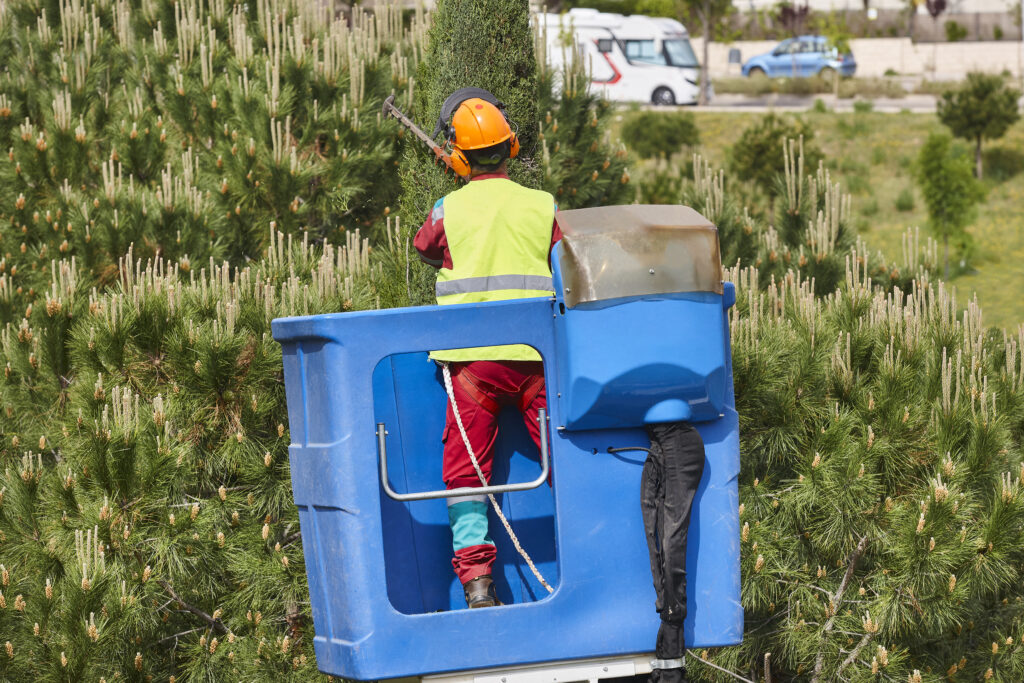Trees are vital to the beauty and health of our outdoor environments. They offer shade, improve air quality, and add a natural charm to our surroundings. However, keeping trees healthy and safe requires regular maintenance. One essential aspect of this maintenance is tree trimming. With proper tree trimming, we can help ensure that trees thrive and continue to provide benefits for years to come.
Regular tree trimming is not just about keeping trees looking nice; it plays a crucial role in promoting the health and safety of both trees and people. By removing dead or diseased branches, we can prevent the spread of pests and diseases that may harm trees. Additionally, trimmed trees are less likely to drop branches or fall during storms, which improves the safety of our homes and gardens.
In this article, we will explore the many benefits of regular tree trimming, from enhancing tree health and safety to boosting curb appeal. We will also discuss when and how often trees should be trimmed to ensure they remain strong and healthy. Understanding the importance of routine tree trimming can help us make better decisions for our landscapes and enjoy the long-term advantages it offers.
How Regular Tree Trimming Promotes Tree Health
When we think about tree care, regular trimming is crucial for maintaining tree health. By removing dead, diseased, or weak branches, we help prevent pests and diseases from spreading to other parts of the tree. This maintenance allows more air and sunlight to reach the inner sections, promoting healthier growth for the entire tree. Regular trimming also helps to balance the tree’s structure, reducing the risk of broken limbs during storms or heavy winds.
Moreover, trimming stimulates growth in the tree’s healthier parts. Cutting away problematic areas directs the tree’s energy to the remaining strong branches and roots, encouraging robust development. Fruit trees, in particular, benefit from this process. Proper trimming can increase fruit production by ensuring that nutrients are distributed more efficiently throughout the tree, leading to a more bountiful harvest.
Safety Benefits of Routine Tree Trimming
Unsafe trees can be a hazard in our yards and communities. Heavy branches that hang over roofs, power lines, or sidewalks pose a significant risk if they were to break and fall. Routine tree trimming helps mitigate these risks by ensuring that any potentially dangerous branches are removed before they can cause harm. This proactive measure keeps our surroundings safer for everyone.
Trimming isn’t just about removing branches; it also involves shaping and controlling the tree’s growth. Properly managed trees are less likely to have structural issues that could lead to accidents. Regular maintenance helps ensure that branches are evenly distributed and that the tree’s weight is balanced. This care reduces the overall risk of sudden breaks or collapses, making our yards safer for kids, pets, and visitors.
Enhancing Curb Appeal through Strategic Tree Pruning
Tree trimming is not just about health and safety; it also dramatically enhances your yard’s curb appeal. Properly pruned trees look well-maintained and can significantly boost the overall appearance of your property. By removing dead or overgrown branches, we help trees grow more uniformly and fit the aesthetic of your landscape better.
Strategically pruning trees can reveal beautiful views and make your home appear more inviting. A tree that is well taken care of acts as a focal point on your property. It highlights the beauty of your house and garden. Regular trimming will ensure your trees remain a prominent, attractive feature of your yard for years to come.
When and How Often Should You Trim Your Trees?
The timing and frequency of tree trimming are crucial aspects of maintaining their health and beauty. Most trees benefit from being trimmed every 1-3 years, but this can vary based on the type of tree and its growing conditions. For instance, fruit trees should be pruned annually to encourage better fruit production, while other varieties might only need a trim every few years.
The best time to trim most trees is during their dormant season, which is in the late fall through early spring. During this period, trees are less likely to be stressed by the pruning process, and it’s easier to see the structure of the branches. Some flowering trees might need trimming right after they bloom to promote better growth and more flowers next season. Regular inspections can help determine when specific trees need attention, ensuring they remain healthy and aesthetically pleasing.
Final Thoughts
Maintaining the health and beauty of your trees through regular trimming is vital for a safe and attractive yard. By promoting growth, preventing disease, and enhancing safety, routine tree trimming provides numerous benefits. Trees that are well cared for not only add to the beauty of your home but can also increase property value and curb appeal.
Our team at One Two Tree is dedicated to helping you achieve a beautiful, healthy outdoor space. If you’re looking to enhance your landscape with professional tree trimming services, reach out to us. Let us help you maintain the natural beauty and safety of your yard. Contact One Two Tree today and experience the benefits of expert tree care.

